The area around Tamarindo in Guanacaste, Costa Rica, has become quite a mecca for families over the past few years. Many people from the U.S. and Canada head south to the pristine beaches of the Gold Coast to benefit from its tropical climate, easy access to nature, and the opportunity to spend more quality time with each other.
Many families with preschool to high school-aged children are heading to Guanacaste for a year or more to embark on a new adventure. Immersing your family in a new culture while learning Spanish and picking up new hobbies, like surfing, is all the rage these days.
Are you interested in retiring abroad? Yes | Not Sure Yet
This article will highlight the following:
- Why people choose the Tamarindo area
- Where people usually rent/buy property
- The educational options in the area
- The steps you can take to get your family a Costa Rican experience (the new Digital Nomad Visa may be just what you need)
Tamarindo’s Climate Encourages Time Out in Nature
Tamarindo’s daytime temperature fluctuates between 85 F and 95 F throughout the year. It has two seasons: wet (May through November) and dry (December through April). During the dry season, consistently sunny days are the norm—it’s summertime. You’ll never need to worry about a backup rain plan since it’s super dry this part of the year.
Thankfully, even in the green season (aka rainy season or winter), there is still a good amount of sunshine throughout the week. One bonus is that cloudy skies do inevitably create stunning, multi-hued sunsets. Since it is always pretty warm outside, dancing in the rain is a thing, especially for the first few rain showers of the season. Everyone loves celebrating when the parched earth soaks up water and returns to a lush, vivid green.
Research shows that people connected with nature are often happier and consider their lives rewarding. There are no shortages of beaches, jungles, and cloud forests here in Costa Rica. Therefore, it is easy for people to focus on this relationship, invoking more joy, calmness, and creativity in their lives.
To truly appreciate this area of the world, one should enjoy spending time at the beach and outdoors. Learning to embrace the sand and sweat is part of the process.

Get Your Free Costa Rica Report Here:
Learn more about Costa Rica and other countries in our daily postcard e-letter. Simply enter your email address below and we'll send you a FREE REPORT – Costa Rica: The Land of Pura Vida
This special guide covers real estate, retirement and more in Costa Rica and is yours free when you sign up for our IL postcards below.
Tamarindo and its Surrounding Areas
When considering the educational options in this area, it is essential to figure out which area will be the best fit for your family.
In this part of Guanacaste, my four top places to rent or buy property are as follows:
Tamarindo
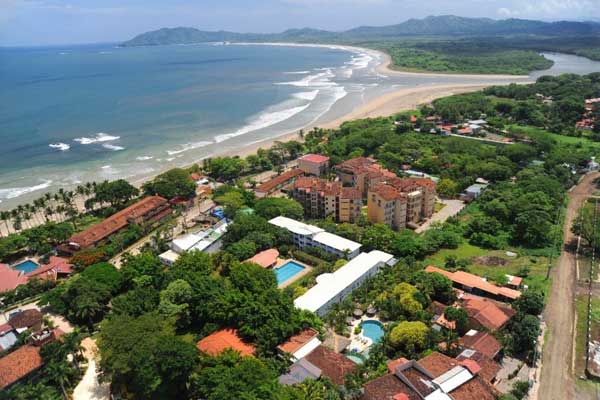
Tamarindo is the hotspot with its crowded beaches and tourist lure. There is a significantly bigger party scene in Tamarindo than in the other areas. Banking and grocery shopping options are plentiful. The beach, hotels, nightlife, and sporting opportunities are all within walking distance.
Personally, I chose to settle down in this area because of how centrally located it is. Tamarindo has a lot to offer, and although some feel like it is too busy, it has everything you need. One bonus is that you can get to a plethora of beaches within a 30-minute radius. Its energy is active, and there are many young families here.
Flamingo/Potrero
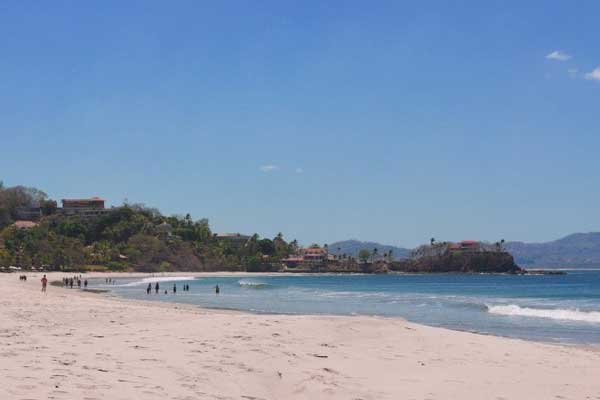
People looking for smaller, more intimate community surroundings head to this area. In the past, this area seemed to be more for retirees, yet nowadays, many families are searching for living arrangements and moving a bit north to these beaches.
Additionally, since the Flamingo Marina is under construction, this area is a hot place to invest in real estate. All the restaurants and shops around the new marina are planning to open in Fall 2022, bringing new energy to this part of paradise.
Avellana/Negra
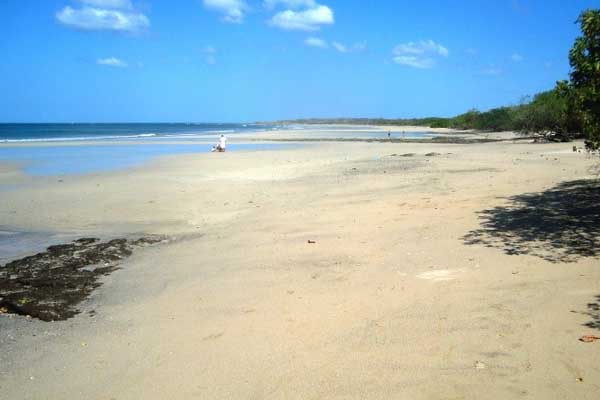
For those who desire a closer connection with nature and want to live off the beaten path, Avellana/Negra is the perfect destination. The road to these beaches is often in rough condition, but that makes it all the more charming, right? Serious surfers flock to these beaches since they are known for their bigger waves.
Jennifer Petrizzi, who has owned La Ventana Natural Foods Cafe & Catering in Playa Negra for the past 15 years, enjoys the quiet of Playa Negra. “It is a nice balance of some tourists without being as congested as other areas. I especially like that there are still ticos living in town and that they haven’t been outpriced and forced to relocate like in Tamarindo. It’s an early to bed early to rise town more focused on health and being active than partying.”
Playa Grande
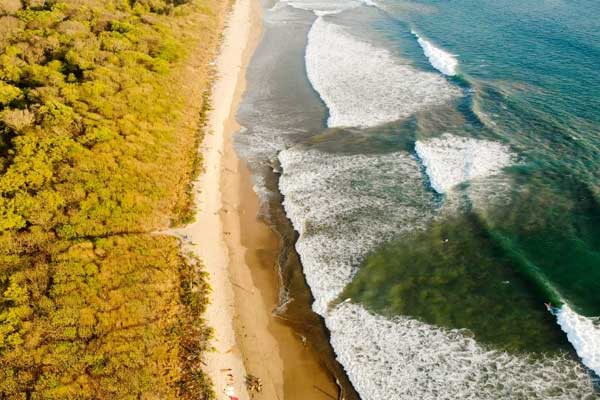
Playa Grande is a fabulous community of families and surfers alike. It is known for being a consistently good surfing spot. Las Baulas National Park is in Playa Grande; therefore, most of the area is protected to preserve its shoreline and beach.
Anne Ferris, a mother who has lived in the area for nine years, loves living in Playa Grande. “It still feels like a small town. Everyone knows and looks out for each other. There are lots of families with kids and the roads are perfect. I enjoy the quiet, peaceful time here and can get to Tamarindo or Flamingo in less than 30 minutes.”
The Schools
When it comes to schools, there is an impressive variety for such a small beach area. Nicole Rangel, who has lived in Tamarindo for five years, shares, “My elementary and middle school children have attended two schools in our time here. Honestly, you can’t go wrong with any of the schools; there is a school for everyone in this area of Guanacaste.”
If you plan on returning ‘home’ before your children graduate, you should choose a school with international accreditation. If your children plan on attending a Costa Rican university, then the school should be accredited by the Ministry of Education (MEP).
To enroll in the public-school system, one must be a Costa Rican resident. All lessons are in Spanish, so students must also be fluent. Therefore, most foreigners living in Costa Rica put their children in private schools.
Here are the options I have chosen for my now 11-year-old twins.
- They started daycare at Nanny Garden (which is now Banana Patch).
- My children attended Happy Garden in Huacas from age three to five.
- For Kindergarten through 3rd grade, they attended the Waldorf Guanacaste School (now the Pacific Waldorf School).
- From 4th grade until now, they have been at a public school and working through an online school in the U.S.
I loved the Waldorf learning experience for my children as I believed that a holistic environment filled with play and nature-based learning was best for them when they started school. Life changed during the pandemic for us, so it ended our time at Waldorf.
I moved my children into a public school to improve their Spanish skills and build more relationships with locals. Since their school day is shorter than most schools and classes often get canceled, I supplement their learning with an online program. Currently, there are many online options to choose from that are U.S. accredited.
Private Schools
In this part of Costa Rica, the private schools follow the U.S./Canadian/European school schedule. Therefore, the summer break falls during June, July, and August—which is ‘winter’ in Costa Rica. Each school has its summer and break schedule, and some schools take three-week breaks in October and around Easter. Everyone enjoys a three to four-week Christmas break.
Private schools range in price; many offer a tuition discount when paid in full at the start of the year. In this area, annual tuition ranges from about $5,000 to $10,500 a year per child. Most schools offer a discounted rate when you send two or more children to the school.
On top of annual tuition, most schools charge an enrollment fee, a new student fee, and some even a non-resident/non-citizen fee. Additionally, most private schools offer a private bus service at an additional cost.

Get Your Free Costa Rica Report Here:
Learn more about Costa Rica and other countries in our daily postcard e-letter. Simply enter your email address below and we'll send you a FREE REPORT – Costa Rica: The Land of Pura Vida
This special guide covers real estate, retirement and more in Costa Rica and is yours free when you sign up for our IL postcards below.
School Choices
Here are some of the top private school options in the area.
- La Paz: Early Childhood Program – 12
- Costa Rica International Academy (CRIA): Early Years Program – 12
- Iren: Preschool – 12
- Journey School: Preschool – 12
- Educarte: Pre-K – 12
- Tide Academy: K – 12
- Pacific Waldorf School: Pre-K – 7 (currently)
- Flourish: Preschool – 6 (currently)
Each school offers something unique. It is up to each family to decide which fits their style and needs best.
For a more rigorous academic curriculum, CRIA and La Paz are often the top options. La Paz and Journey offer an IB (International Baccalaureate®) program while CRIA is MEP and U.S. accredited.
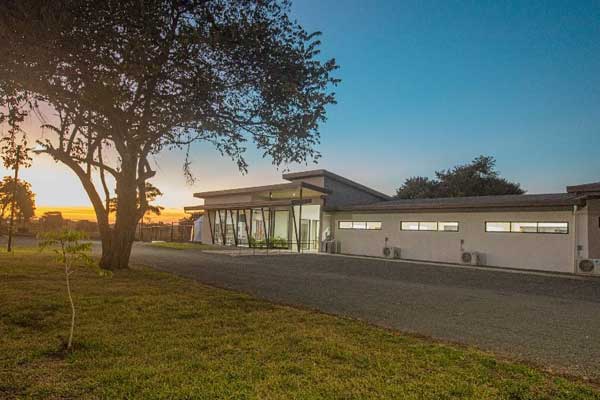
Susan Schiavon has sent her daughter to CRIA for the past six years. “We enrolled when our daughter was starting grade 3. We initially chose CRIA because the academic structure of the classes and curriculum was similar to what our daughter was attending previously in Canada.”
Journey and IREN stand out as project-based, student-centered programs. IREN founder and Director Sylvia Barreto says, “IREN understands that a child’s social-emotional intelligence is as important as their academic growth. Our motto is love, security and acceptance.”
Angie Arroyo Arias loves how she has seen a jump in her daughter’s learning and confidence at IREN. “We love IREN, my daughter is very artistic and athletic, so this school fits her personality perfectly. IREN has academics combined with projects, art, and outdoor activities like archery and horses.”

A year ago, Jordan Moore and her family relocated to Guanacaste because of the vast school options. She checked out many schools and felt that Journey was best for her two elementary-aged girls.
Jordan shares, “Their approach to true joy in learning combined with a rich social and emotional curriculum was what we were looking for. The school didn’t take itself too seriously, which was a big non-negotiable for us. No assigned homework until 9th grade was our deal sealer since we want our kids to spend their time playing and being in nature after school. We were looking for a school that valued learning but did not take academics more seriously than joy, emotional intelligence, and teaching kindness and respect for self and community.”
Nicole Burch’s children attended Educarte in the past, and she believes that “Educarte is probably one of the most immersive private schools in the area, providing a diverse group of families and a rigorous blend of Costa Rican and American-style education.”
Lisa Burnham, who has lived in this area for six years, decided to move her daughter, who graduated a couple of years ago, to Tide Academy from another school. “The workload at her first school was too stressful. It was not what we had envisioned for her lifestyle; we also wanted her to have time to be a kid and to hang out with friends. This switch also allowed her time to get really into horseback riding.”
The founder of Flourish, McKenna Talavera, started her school so “students could be taught by teachers committed to providing a faith-based environment while growing and exploring their passions in service, academics, arts, and nature.”
Some parents decide to send their children to different schools while others start at one school and then move to another the following year. Since there are so many choices, you are bound to find the perfect match.
Camps and Extracurricular Activities
Not only are there schools galore, but there are many opportunities to keep your kids busy while school isn’t in session. Camps run during Christmas, Easter break, July, and August.
Additionally, there are tons of extracurricular activities in the area. Here is a list of some of the most popular activities in my community.
- Jiu Jitsu
- Parkour
- Karate
- Surfing
- Horseback riding
- Music lessons (singing and instruments)
- Dance lessons
- Skateboarding
Furthermore, more resources are opening in the area to assist children. For example, Pitahaya Learning Hub opened in June 2020. Its owner and founder, Vivian Saenz Azuola, serves students with learning differences and supports schools. The hub’s purpose is to “guide children in the process of discovering their full potential.”
How to Move Your Family to the Tamarindo Area
If you are considering moving your family to Tamarindo for a year or two for a family adventure, then the new Digital Nomad Visa is for you. Costa Rica developed this option for those working remotely.
The benefit of this visa is that you aren’t on a tourist visa. Obtaining this visa means you don’t have to leave the country every 90 days. Moreover, if you love life in Costa Rica, you can renew it for a second year as long as the holder spends at least 180 days in Costa Rica during the first year.
The first step is registering at the Department of Immigrations’ Tramite ¡YA! Website. Costa Rica has 20 working days to review, accept, or deny your application.
Once you enter Costa Rica, you have three months to bring your officially translated documents to immigration to apply for the visa. Here are the requirements for the Digital Nomad Visa.
- For a family, proof of a stable income of $4,000 per month (showing the previous year’s income)
- Private health insurance for the year (covering a minimum of $500,000)
- Payment of the processing fee ($190)
- A signed, translated affidavit verifying your application
With this visa, you are exempt from paying income tax in Costa Rica. Another advantage is that you don’t have to pay duties on any work equipment when entering the country. You can also choose to hire a lawyer to complete the process for you.
Learn more about moving to Costa Rica and the requirements to apply for residency here. You may just decide to purchase property and move permanently to Tamarindo once you experience the Pura Vida vibe. Some people find it impossible to leave!

Get Your Free Costa Rica Report Here:
Learn more about Costa Rica and other countries in our daily postcard e-letter. Simply enter your email address below and we'll send you a FREE REPORT – Costa Rica: The Land of Pura Vida
This special guide covers real estate, retirement and more in Costa Rica and is yours free when you sign up for our IL postcards below.
Related Articles
Guide to The Bustling Beach Town of Tamarindo, Costa Rica
Best Places to Live in Costa Rica: Five Top Expat Havens
Is It Safe to Live Costa Rica – Expat Safety
Upcoming Conferences
The Only 2024 Fast Track Panama Conference
If your dream retirement involves stunning beaches… lush green mountains… a warm climate with no hurricanes… first-rate healthcare… incredible value for money (a couple can live well on $2,200 a month)… and the World’s #1 Retiree Discount Program…
Join our Panama experts and expats in February and discover why Panama could be your perfect paradise.
REGISTER NOW, SEATS LIMITED: EARLY BIRD DISCOUNT HERE

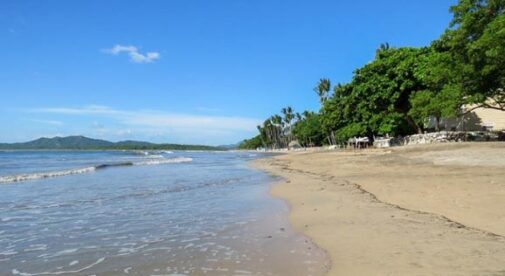
.png)